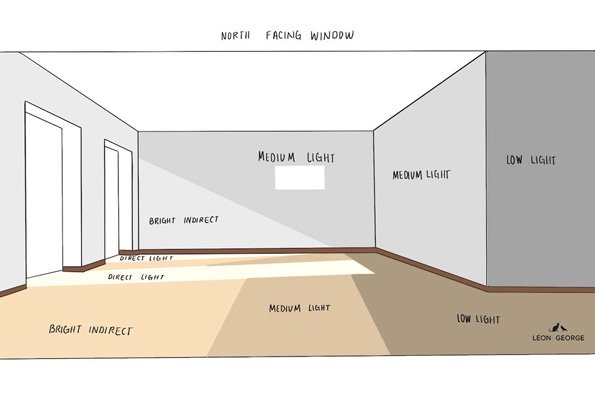What Light Do You Have?
When someone’s looking for help choosing a new plant, one of the first questions we ask is: what type of light do you have? This question can be confusing, especially as there are not only light changes throughout the day but also throughout the seasons.
Your first assignment is to know the direction your windows face. This will determine if you receive any direct sun (which isn’t essential for most indoor tropical plants!):
East: direct morning, early afternoon light. Less harsh than afternoon direct sun.
West: direct sun in afternoons, more intense
North: no direct sun, generally the lowest light levels
South: consistent direct sun throughout the day
Next, you’ll need to know how close to a window your new plant will be placed. It’s helpful to decide where in the home you’re looking to add a new plant before picking one out. The more you move your plants around trying to find the right spot, the longer it takes them to acclimate, and the more stress you can cause them.
Use the chart below to identify your light levels, and to get a visual for how light changes depending on proximity to a window:
Direct sun
Bright, indirect light
Medium, indirect light
Low
Plants for direct sun:
Cacti, succulents, carnivorous plants
Plants for bright, indirect:
Ficus, Palm, Alocasia, Monstera, Money Tree, Philodendron (can all handle dappled direct too!)
Plants for medium to low:
ZZ, Dracaena, Sansevieria, Dieffenbachia, Aglaonema, Pothos, Ferns, Maranta, Calathea (all will thrive in bright light also!)
Keep in mind, most commonly cultivated tropical plants are grown in bright, indirect light (even low light tolerant plants!). So, no matter what, if you place your new plant in low light, it will definitely still go through an adjustment period (yellowing leaves/dropping leaves).

